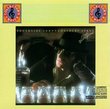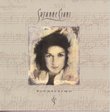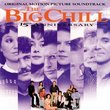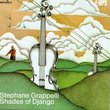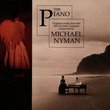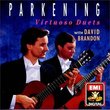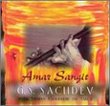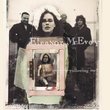| All Artists: Steve Reich, Bang on a Can Title: Steve Reich: New York Counterpoint; Eight Lines; Four Organs Members Wishing: 9 Total Copies: 0 Label: Nonesuch Release Date: 4/25/2000 Genre: Classical Styles: Chamber Music, Symphonies Number of Discs: 1 SwapaCD Credits: 1 UPC: 075597948127 |
Search - Steve Reich, Bang on a Can :: Steve Reich: New York Counterpoint; Eight Lines; Four Organs
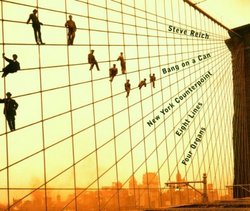 | Steve Reich, Bang on a Can Steve Reich: New York Counterpoint; Eight Lines; Four Organs Genre: Classical
Steve Reich's take on what's popularly been called minimalism has been to illuminate the nature of musical phrases played in staccato fashion on various instruments and then variously "phase shift" their lines into new, co... more » |
Larger Image |
CD DetailsSynopsis
Amazon.com Steve Reich's take on what's popularly been called minimalism has been to illuminate the nature of musical phrases played in staccato fashion on various instruments and then variously "phase shift" their lines into new, contrapuntal relationships. This music can either delight or annoy, and Reich has done both in his time. Fortunately, on this disc the music itself is neither too complex to play nor too difficult to follow, and it could stand as an excellent primer for Reich's early minimalism. What genuinely triumphs on this disc is Octet (of 1979/80). It's an athletic work that brings various instruments into and out of play in carefully cadenced rhythmic patterns that are typical of Reich's very best writing. For Reich fans, though, there might not be anything new here; newbies, however, should be quite taken. --Paul Cook Similarly Requested CDs
|
CD ReviewsNew York School, the second generation... somebody | NYC | 05/21/2000 (4 out of 5 stars) "A composer unique in his own systematic musical processes, Steve Reich's approach to music making is one of sonic exploration, tangled complexity, and formulas laden with rhythmic intensity. Frequently based on tonal canonic motives, his harmonies phase seamlessly together to create a mesmerizing musical environment. Presented chronologically in reverse order of time composed, this recording presents three seminal works by Reich that demonstrate his unyielding evolution from minimalist to modernist. Reminiscent of the classic "Music for 18 Musicians" from the mid-seventies, "New York Counterpoint," displays Reich's pulsing sonorities, convincingly interpreted by clarinetist Evan Ziporyn. The intricate "Eight Lines," revised in 1983, blends calm, elongated string lines against a backdrop of coloristic woodwinds in contrapuntal fury. "Four Organs", composed in 1970, shows a compositional structure in the form of uncompromising minimalism. The music is absolutely static, played flawlessly by maracas and four Farfisa organs. In Reich's own words, "The tones would simply begin in unison..., and then gradually extend out like a sort of horizontal bar graph in time." Who better than Reich's own musicians could pull off such an amazing clinical performance of this music? New York resident ensemble Bang on a Can. A must have for any Reich enthusiast." Some interesting works. Some uninteresting. S. C Rice | 11/15/2001 (3 out of 5 stars) "In my opinion, minimalist music definitely has its hits and misses. However, Steve Reich tends to weave far more aurally interesting patterns into his music than, say, Phillip Glass. On this CD is what I consider to be one of Reich's successes; the New York Counterpoint. This work for recorded clarinet soloist is able to hold its own as an interesting piece of music. It is in some ways reminiscent of Reich's `Music for 18 Instruments,' as there are droning pulses that appear periodically and contrapuntal repetitions. The movements each have a distinct character. The first is mysterious, the second contemplative and the third silly and carefree. The third movement also incorporates jazzish rhythms into the mix. This piece is a really excellent example of using minimal means to maximum effect.
The other pieces are less interesting. The `Octet' often drags and `Four Organs' definitely does, although it has a certain hypnotic quality that the Octet lacks. Four Organs is one of those pieces that created audience uproar when it was played in New York, so it's always interesting to hear what people fussed about. Overall, `Four Organs' is the earliest and most experimental piece. By contrast it is pretty rugged; the Hammond organs create a wall of homogenous sound that really starts to grate on you unless you stop waiting for it to change. The Octet, I think straddles the line between `New York....' and `Four Organs' both chronologically and in terms of the duration of repetitions. In `New York...' things change just when they become uninteresting. In `Four Organs' things don't change and you just need to adapt yourself to what is going on. `Octet' yields a little; it is not as mechanistic as `Four Organs,' but still leaves you getting bored with the events before they change. New York Counterpoint is worth it, and 'Four Organs' is historically interesting. Perhaps the octet is interesting filler." |

 Track Listings (5) - Disc #1
Track Listings (5) - Disc #1